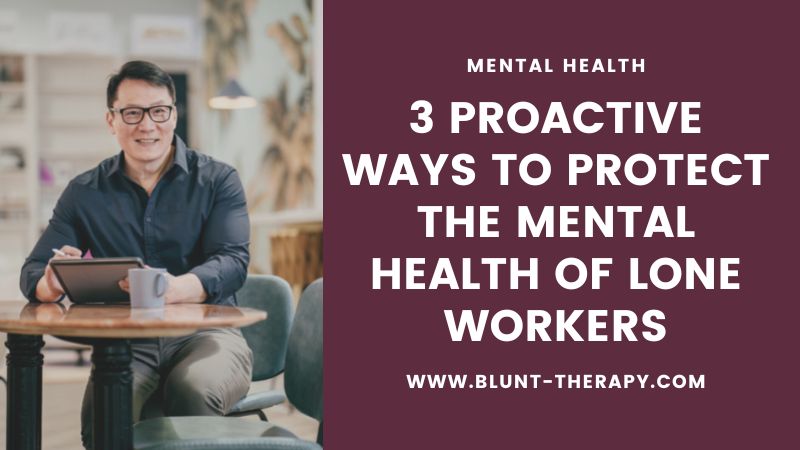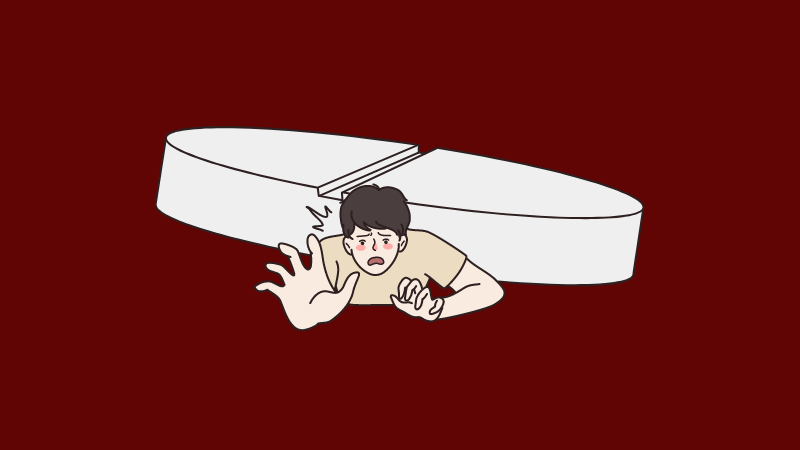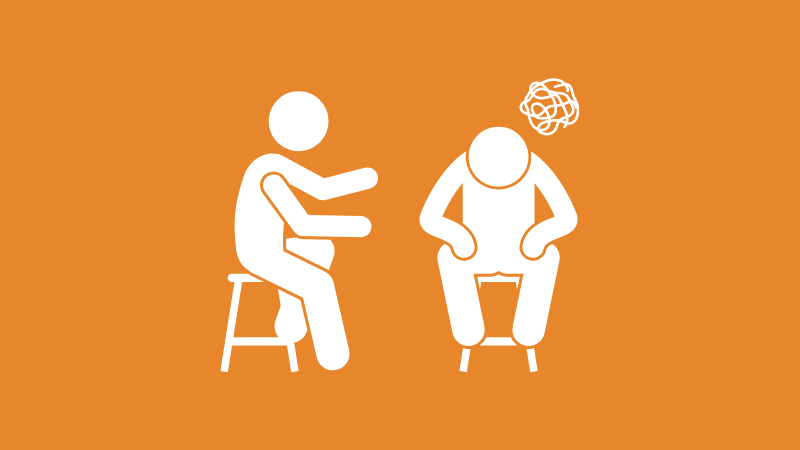Table of Contents
Affiliate link notice: As an affiliate of BetterHelp and other third-party vendors, We will receive compensation if you make a purchase using the links provided on this page. For more information, visit our disclosure page.
Last Updated on May 12, 2023 by Randy Withers, LCMHC
With our increasingly sedentary lifestyles and long hours spent sitting, our bodies often suffer from back pain, joint pain, and sore muscles. Not only does this impact our physical wellbeing, but it can also have a detrimental effect on mental wellbeing.
One simple, yet powerful solution to combat these issues is regular stretching into our routines. This article will explain the various advantages of stretching for mental health, as well as explore different types of stretching and how you can incorporate it into daily life.

Stretching and Mental Health
Stretching may not seem like a particularly mental activity, but its effects are immense. Regular stretching not only reduces stress, but also brings inner balance. As your body becomes more flexible and comfortable, your mind follows suit for improved mental wellbeing.
Types of Stretching for Mental Health
Stretching offers several forms to choose from to promote relaxation and stress reduction. As your muscles become more flexible and comfortable during stretching sessions, so does your mind, leading to improved mental wellbeing.
There are three primary types of stretching, each offering its own advantages:
1. Static Stretching
This involves holding a stretch in place for an agreed upon amount of time (usually 15-30 seconds). Static stretching can be beneficial after exercising or doing physical activity, as it helps lengthen tight muscles and increase flexibility. Performing tricep stretches after chest and tricep exercises will help maintain muscle health.
2. Dynamic Stretching
This form of stretching requires movement, such as leg swings or arm circles. Dynamic stretching should be performed prior to any workout or physical activity, in order to warm up the muscles and prepare them for movement.
3. Pre-contraction Stretching.
Also known as PNF (Proprioceptive Neuromuscular Facilitation), stretching involves contracting the muscle before stretching it. This technique can be especially helpful in increasing flexibility and range of motion.
Stretching for Relaxation and Energy
By including stretching in your routine, you can experience both physical and mental relaxation. Stretching helps release muscle tension, which in turn alleviates stress and anxiety. As your muscles become more flexible, your body will feel more at ease.
Stretching not only promotes relaxation, but also boosts your energy levels. Exercising increases blood flow to muscles, which in turn helps deliver oxygen and nutrients throughout your body. The improved circulation can leave you feeling energized and alert.
Improving Posture and Inner Balance
Stretching can have a major effect on your posture and body alignment. Many individuals who sit for extended periods may experience tight hip flexors, rounded shoulders, or forward head posture from over sitting. Regular stretching helps counteract these imbalances for improved alignment, as well as reduced discomfort from sitting too long.
Furthermore, stretching can improve your sense of inner balance. As your body becomes more flexible and posture improves, you may find your mind becomes more centered and focused. This mental equilibrium may lead to better decision-making, increased creativity, and a rosier outlook on life.
How to Incorporate Stretching Into Your Routine
Before beginning any stretching routine, it is essential to warm up your muscles to avoid injuries. Start with some light aerobic activity, like walking or jogging for a few minutes to increase your heart rate and get the blood flowing.
Begin to incorporate stretching into your life by stretching three to four times a week for several minutes each session. Start by targeting sore or tight muscles first, holding each stretch for at least 5-10 minutes for noticeable effects.
Consistency and patience are the keys to getting the most out of stretching exercises.
4 Words of Advice About Stretching
Before beginning a stretching regimen, it is essential to seek medical advice from qualified professionals. This will guarantee that you approach this new activity safely and effectively.
1. Consult Your Doctor Before Beginning Stretching
If you have any preexisting medical conditions or concerns about your physical wellbeing, it’s essential to speak with a healthcare professional before beginning a stretching routine. They can assess your individual needs and offer tailored recommendations so that stretching is done safely.
2. Focus on Correct Technique
Correct technique when stretching is essential to avoid injury and ensure you’re targeting the correct muscle groups. If you are unsure how to perform a specific stretch, consult with a physical therapist, certified personal trainer, or yoga instructor who can guide you through proper form and alignment.
3. Listen to Your Body
It is critical to pay attention to your body’s signals when stretching. Stretching should never cause pain or discomfort. If you experience pain while stretching, cease immediately and consult a healthcare professional. Knowing the difference between mild discomfort from stretching and actual pain is crucial, as pushing beyond one’s physical capacity could lead to injuries.
4. Progress Gradually
When beginning any new exercise routine, it’s essential to progress gradually. Start with shorter, more manageable sessions, and gradually build up to longer, more intense stretches as your flexibility improves. This approach helps avoid injuries and gives your body enough time to adapt to the new regimen.
Final Thoughts
Stretching has numerous advantages for physical and mental health. By adding regular stretching into your routine, you can reduce stress, improve mental relaxation, boost energy levels, achieve inner balance and promote better posture. Start by stretching just a few minutes each day, then build up to more consistent sessions until your quality of life improves significantly.
As your body becomes more flexible and comfortable, so does your mind, leading to improved mental clarity and more balanced living.
Don’t underestimate the power of stretching. It could just be the key to unlock better mental wellbeing and an all-around balanced life!
FAQ About Stretching for Mental Health
Can stretching improve mental health?
Yes, stretching can have a positive impact on mental health. Regular stretching can help release tension and stress from the body, promote relaxation, and increase blood flow to the brain, which can help improve mood, reduce anxiety, and alleviate symptoms of depression.
How does stretching affect the brain?
Stretching increases blood flow to the brain, which can improve cognitive function, focus, and concentration. Stretching also activates the parasympathetic nervous system, which promotes relaxation and reduces the production of stress hormones. This can help lower stress levels and improve overall mental well-being.
Can stretching be used as a stress management technique?
Yes, stretching can be an effective stress management technique. When you stretch, you activate the parasympathetic nervous system, which helps your body relax and reduce stress. Stretching can also help release muscle tension and promote a sense of calm, which can help you manage stress and anxiety more effectively.
Is stretching helpful for reducing anxiety and depression symptoms?
Yes, stretching can help reduce symptoms of anxiety and depression. Stretching promotes relaxation and releases tension from the body, which can help lower stress levels and alleviate symptoms of anxiety and depression.
Additionally, stretching can increase the production of endorphins, which are feel-good hormones that can help improve mood and reduce symptoms of depression.
How often should I stretch for mental health benefits?
The frequency of stretching for mental health benefits can vary depending on individual preferences and physical abilities. However, incorporating stretching into your daily routine, even for just a few minutes a day, can help you experience mental health benefits.
It’s important to listen to your body and stretch at a level that feels comfortable for you, and to consult with a healthcare professional or a qualified fitness expert if you have any concerns or medical conditions that may affect your ability to stretch.








